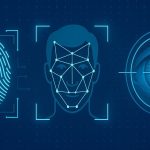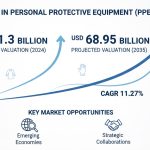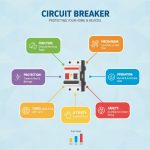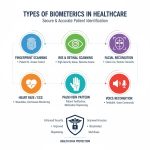This is particularly true concerning wearable medical devices over the past decade, where a new market has been established. With the help of new achievements using artificial intelligence and the Internet of things technology, wearable medical devices became not only useful tools in individualized medicine but also very effective ones. They make it possible to monitor, diagnose predict and manage different heath conditions hence are some of the most essential tools in medicine today.
Introduction to Wearable Medical Devices
Wearable medical devices can be described as transportable plus electronic goods that have the aim and purpose of collecting compulsory health information. This encompass fitness trackers, smartwatches with health capabilities, glucose monitoring devices and wearable ECG devices. These gadgets have now formed part of preventive measures of health, as well as part of orders, for managing chronic ailments.
Our comprehensive Wearable Medical Devices Market report ready with the latest trends, growth opportunities, and strategic analysis- View Sample Report PDF
Key Features of Wearable Medical Devices
- Continuous Monitoring: They monitor essential statistics including pulse rate, blood pressure and blood sugar.
- Data Collection and Analysis: Health status of the can be monitored in real-time using data collected to gain an insight about a user.
- Connectivity: Smartphones and cloud platforms compatibility allows the application to share information with healthcare givers instantly.
- User-Friendly Interface: Efficiency of the designs avoid inconvenience for patients of all ages.

The Role of AI in Wearable Medical Devices
Wearable Medical Devices have been transformed by AI in a way that it helps interpret the data better and approaches the healthcare problem with individualistic perspective. Here are some of the key contributions of AI:
Predictive Analysis and Early Diagnosis
Machine learning computing from the collected information generated by wearable equipment identify potential health complications. For example, machine learning can detect uncommon heartbeats like a fib when they are not dangerous yet. Accounting to this type of analytics and application of analytical tools, disease diagnoses and interventions can be done earlier.
Personalized Healthcare
It is also used in improving on the specific and individualized healthcare plans for the patients. Through studying the patient’s health information, the smart wearable technology gives the patient recommendations on exercise, nutrition, and medication to enable them to reach particular health objectives.
Advanced Monitoring for Chronic Diseases
Examples of diseases for which patients benefit from artificial intelligence wearables are diabetes, hypertension, and COPD. These devices keep track of variations in vital parameters and give alarms for any irregularity so preventing complications.
Enhanced Data Interpretation
The collected data from the wearable devices directly can be large and confusing a lot of the time. AI makes it easier to do this by removing the noise and focusing on the information that will be useful to both the user and the healthcare giver.
Integration with Telemedicine
Telemedicine is done with the help of wearables through sharing of health information with the doctor’s consent. The integration thus entailed enables efficient production of accurate diagnosis and treatment recommendation.
The Role of IoT in Wearable Medical Devices
This paper focuses on the Internet of Things (IoT) infrastructure that links wearable medical devices to an environment of digital health. Wearable technology finds itself benefited from IoT in a sense that, IoT links devices, cloud platforms and healthcare systems thereby enhancing the functionality of wearable technology.
Real-Time Connectivity
Wearable gadgets send collected health information to other connected applications and systems. This is important to warrant continuous monitoring as the healthcare providers are in a position to make the necessary decisions as soon as possible.
Remote Patient Monitoring (RPM)
With the help of IoT, Remote Patient Monitoring has been possible. For instance, Io Tensile glucometer or pulse oximeter helps the clinician to check the patients’ status without physically visiting them and manage chronic diseases effectively.
Seamless Data Integration
Wearable IoT builds a common system through which data collected by different wearable devices is shared and processed. It is used to offer a detailed outlook of patient health which helps in nurturing better insight on trends observed and hence to enhance the impact of clinical judgments.
Automated Alerts and Emergency Response
The IoT based systems for instance the surveillance systems can alert the relevant authorities once an event occur. For example, an exercise detecting gadget identifying a cardiac event can call an ambulance and fast access to a medic.
IoT and Cloud Computing
IoT makes use of big data from cloud computing storage to accommodate data from wearable gadgets. This information can be retrieved by a patient, any caregiver or health professions employed with a specific patient, and other health care providers this way the information is open and the patient’s treatment does not stagnate.
Key Applications of AI and IoT in Wearable Medical Devices
Fitness and Wellness
Wearable devices such as Fitbit and Garmin employ AI as well as IoT to help people control their physical activities, hours of sleep, and diet. They feature information about individual’s fitness plan and motivate people to lead a healthy life.
Cardiovascular Monitoring
Smartwatches and similar wearable ECG devices employ artificial intelligence algorithms to diagnose various heart conditions, including chaotic heart rhythms. IoT makes sure this data is relayed to healthcare providers instantly for action to be taken.
Diabetes Management
AI incorporated in the usage of Continuous Glucose Monitors (CGMs) are able to examine glucose patterns and suggest the precise and right dosage of insulin. From a connectivity standpoint, IoT initiates automated update of applications on mobile devices or the cloud for tracking.
Mental Health
Smartwatches and other wearables can monitor stress, sleep, and even the wearer’s moods employing AI. These observations are beneficial in the treatment of mental illness for person and clinical practice.
Rehabilitation and Recovery
IoT smart devices help patients undergoing physical therapy or recuperation from specific surgery. For instance, a passive infra red motion sensor can monitor one’s improvement in workout regimens and recommend changes for improved result.
Benefits of AI and IoT in the Wearable Medical Devices Market
Improved Patient Outcomes
These technologies offer recommendations of the best approaches to take to diagnose the health situation early and administer pro-active, unique treatment, to improve on the quality of medical care.
Cost Efficiency
Remote monitoring eliminates frequent hospital visits hence making healthcare cheaper to patients and care givers.
Enhanced User Engagement
Health-focused AI and IoT devices give users engaging tools that help them maintain interest in their wellness journey.
Scalability
Through IoT networks wearable devices can join larger healthcare systems to reach more users.
Data-Driven Insights
AI and IoT systems work together to analyze data in such a clear way that healthcare teams can base their choices on real facts.
Challenges in Implementing AI and IoT in Wearable Medical Devices
Data Privacy and Security: Wearable devices produce massive data that threatens both digital security and patient confidentiality. Device makers must fulfill their data security responsibilities to win customer loyalty.
Integration with Existing Healthcare Systems: Wearable devices often struggle to fit with current hospital systems especially in places where technology adoption is slow.
High Initial Costs: Exponential investments needed for AI and IoT implementation often stop smaller companies from participating in this technology.
Regulatory Challenges: Strict adherence to medical standards presents a need that delays company’s launch of new products into the market.
Future Outlook: AI and IoT in Wearable Medical Devices
AI and IoT technologies help advance wearable medical devices into a more productive future. Emerging trends include:
- AI-Powered Predictive Healthcare: Better health prediction technology detects medical problems earlier than traditional symptoms.
- IoT in Precision Medicine: A networking system that lets medical teams choose exact treatments from patients’ health information.
- Wearables for Aging Populations: Elderly care devices support both daily movement and medication compliance by detecting when users fall.
- 5G Connectivity: IoT devices will perform better in real time thanks to the faster and more dependable data transfer.
For Wearable Medical Devices Market Report and updates detailed: View Full Report Now!
Conclusion
AI and IoT drive major advances in the wearable medical devices market which helps all stakeholders in healthcare. AI and IoT tools are transforming how doctors care for patients by making it better for chronic diseases while helping with future health predictions. Success in tapping this technologies’ total potential requires tackling security of data, following regulations, and controlling costs.
The wearable medical device industry expects rapid expansion through the progress of AI and IoT technology.
Check out Vantage Market Research’s comprehensive Wearable Medical Devices Market study for a thorough examination of market projections, major players, and geographical trends.
![[Market Research Reports] – Research Google News Blog | VMR.Biz](https://www.vmr.biz/wp-content/uploads/2022/12/logo-removebg-preview.png)











